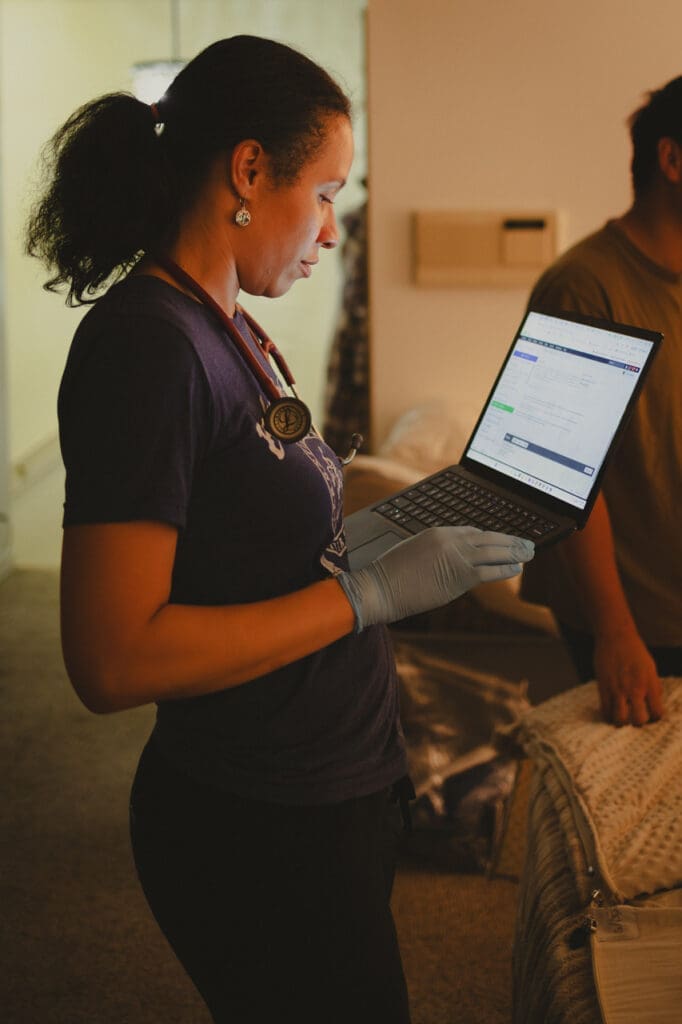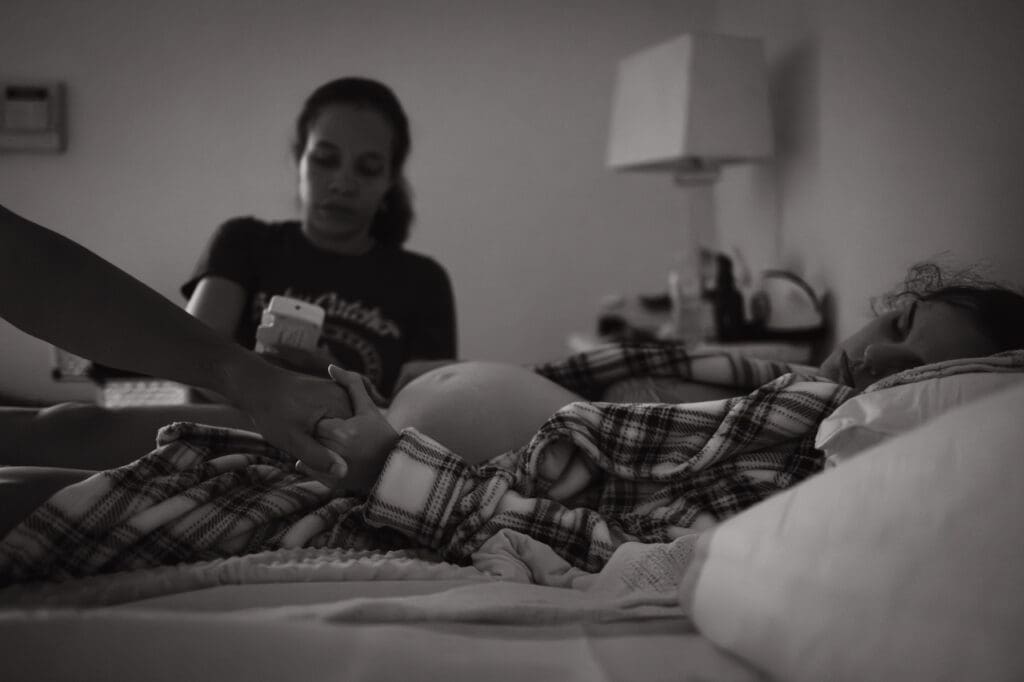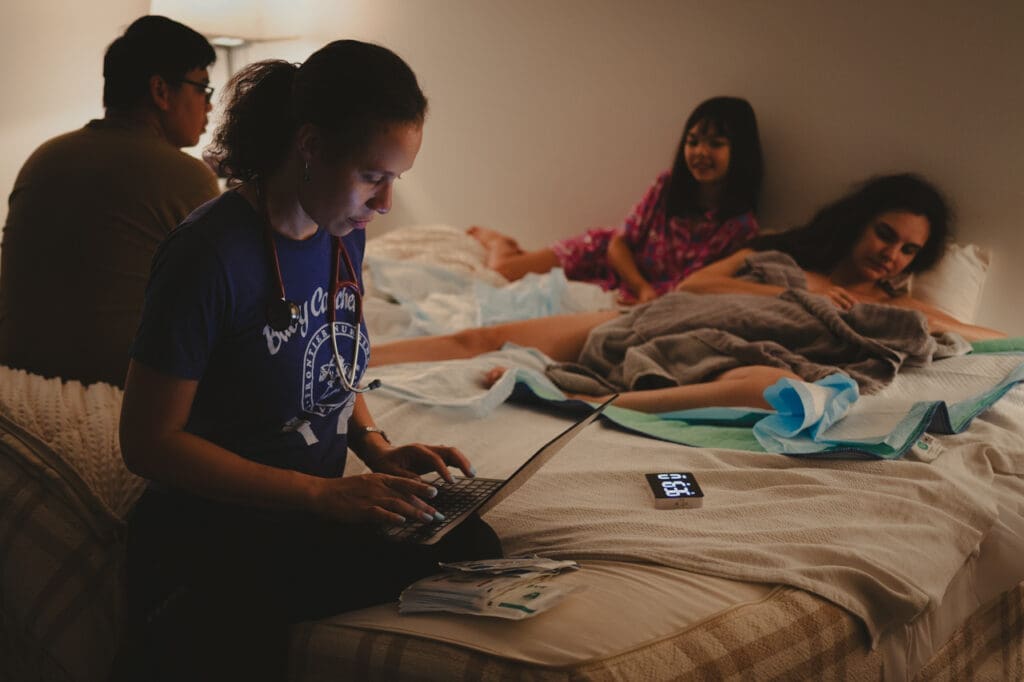Why More Families Are Choosing Home Birth is the second post in a series called Conversations With a Midwife, spotlighting my conversation with Victoria Gordon, a certified nurse midwife, mother of six, and founder of Red Moon Midwifery. From her offices in Jacksonville, FL, St. Mary’s and Valdosta, GA, she cares for families seeking home birth, midwifery care, and holistic wellness. You can find the first post here.
For many families, choosing home birth is about seeking safety, respect, and a sense of control after feeling overlooked in a traditional medical system.
When I sat down with midwife Victoria Gordon, our conversation turned to the state of maternal care in Georgia and why more and more families are looking beyond the hospital for their birth experiences.
Georgia’s Maternal Care Crisis

“I will tell you that the 2025 Georgia Maternal Mortality Review Committee released their annual report: 80% of the maternal deaths in Georgia last year were preventable.
Eighty percent.
Eighty percent of all the deaths. So why weren’t they prevented? They were not at home; they were all in the hospital. They were all hospital births. So, where is it going wrong?”
I couldn’t believe it when Victoria gave me this statistic. I immediately researched on my own. Shockingly, the number is actually higher. The Maternal Mortality Fact Sheet put out by the Georgia Department of Health states that the committee determined 87% of pregnancy related deaths between 2020 and 2022 had some chance of being prevented.
Georgia consistently ranks among states with the highest maternal mortality rates. With numbers like these, is it any wonder why more families are choosing home birth?
Racial Disparities in Maternal Care
The reality is even more devastating for Black women in Georgia. Between 2018 and 2020, Black mothers were nearly three times more likely to die from pregnancy-related causes than white mothers.
These disparities go beyond statistics. They reveal the lived reality of mothers navigating a system that was never designed with them at the center. For Black and Indigenous women, other women of color, and LGBTQ+ families, the barriers to safe and respectful care are even higher.
“It’s unacceptable,” Victoria said. And it absolutely is.
Both Sides of Maternal Care
As a patient and as a provider, Victoria has seen both sides of the system.
“I didn’t have good experiences in childbirth. I’ve had three kids in the hospital setting and it does leave much to be desired. So when I was the provider and doing birth in a hospital, I always tried to afford people whatever I could, whatever I knew I could let them do without getting fired.”
I found myself nodding along here. I gave birth four times in a hospital, in three different cities, with three different doctors. Each experience was different, yet the same. They all spoke to me with varying degrees of condescension. Births at their practices were highly scheduled. I always left feeling rushed and dismissed.
“When you’re in a hospital setting, there’s less room for personalization because you don’t know these people… Continuity of care is amazing. I wish we could do that.
But when people come into the hospital, you don’t know them from anybody most of the time, and so personalization becomes something dangerous that opens up the hospital for liability.”
The system isn’t just hard on families. It was hard on Victoria too as someone who is passionate about her work and wants to truly take care of her patients.
“Sometimes I felt like I was just trying to keep Moms alive long enough to deliver their babies.”
Her words are heavy, but they point to what’s at stake when care becomes less about people and more about convenience. And why more families are choosing home birth.
“When people come to me looking for a home birth, it’s almost like they’re not really looking for a home birth; they just don’t want to be traumatized by the hospital again. They would give birth at the hospital if they didn’t do these things.”

When Families “Fall Into” Home Birth
Although some families do plan for a home birth from the beginning, many of Victoria’s clients arrive there after they’ve already had one or two (or more) babies. It’s not necessarily about twinkle lights and bathtubs (though those can be an added bonus); it’s about trying to avoid another round of trauma.
“A lot of my clients kind of fall into home birth because they’re looking for another solution to their problem, and there just isn’t another. It’s either I go to the hospital where I’m traumatized, or I do it at home. So it’s not something they ever envisioned themselves doing or planned on doing with their life; they sort of fall into it.”
These parents aren’t necessarily chasing an idealized version of birth; they’re trying to protect themselves from repeating a painful experience.
From Last Resort to Birth Empowerment
And yet, even in those circumstances, something shifts. What begins as a last resort often becomes a place of empowerment. By stepping outside of a system that dismissed their voices, families discover an environment where their choices matter.
Victoria explained why that shift is possible:
“I do try to offer people as much choice as I can in the out-of-hospital setting because I can personalize it, and I can get to know you, and I can help you through those conversations that make sense for you specifically.”
Of course, no setting is perfect. Insurance and state rules still limit some choices. But compared to the hospital, families describe home birth as a place of greater freedom, respect, and voice. And that makes all the difference.
It certainly did for me.

Redefining Birth Safety
Before the pandemic, home and birth center births made up less than 1% of births in Georgia. That number has been slowly rising, a sign that families are truly seeking change in the standard of care they’ve been receiving. With the right provider, birth can be a positive and powerful experience.
So where does that leave us? What can we do now? How do we navigate this?
Those were the questions on my mind as we continued our conversation and long after I left. What does true safety really look like and how can we achieve it?
A Midwife’s Core Beliefs
“I believe that we were designed to do this, that we should be able to do this, and that intervention should not be overused.”
When I asked her how those beliefs shape her care, she explained:
“I think that I probably do a lot more assessment than people would like. But to me, that’s one of the best things about home birth. You can do more assessments, you can pay more attention, and you can spend more time.”
At the heart of it all is safety. Not the hospital’s version of safety, but one built on respect and choice.
Safety Begins With Respect
“We must be careful as providers not to retraumatize people by taking away their choices...
…True maternal safety won’t come from walls and monitors alone. It will come from listening, respecting, and trusting the women bringing life into the world.”
Families aren’t just looking for a place to give birth. They’re looking for care that treats them as whole people, with voices that matter. The question we all deserve to ask is What would birth look like if I felt safe, supported, and truly heard?
Obviously, we don’t have all the answers yet. But we have to keep asking questions. Of ourselves and of providers, who should be helping, not hurting
As a birth photographer and storyteller, these conversations remind me why I pick up my camera in the first place. Every birth tells a story. Of strength, of trust, of families finding their voice. My hope is that by having conversations like this, more families will feel empowered to choose the birth experience that truly supports them.
You might also like:
- What No One Prepares You For Postpartum: The Emotional & Mental Side
- What No One Prepares You For Postpartum
- What Does a Doula Actually Do?
- Finding Balance in Motherhood
- Do You Really Need a Birth Plan?
comments +